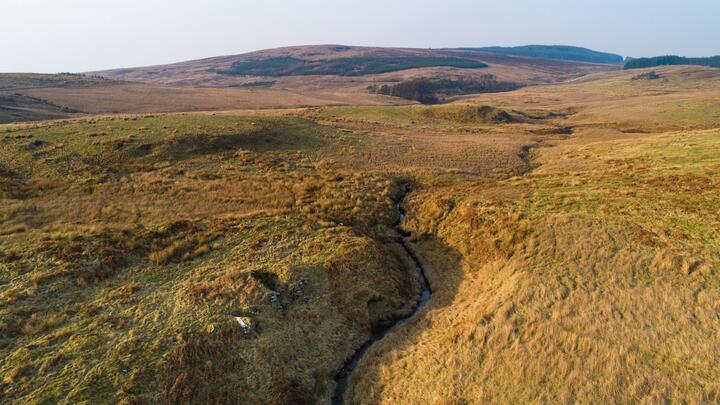
Green Light: Land and Diversity
braids with sitka.jpg

Here’s a quiz to get you going:
- How far down the list are we of the world’s biggest polluters in terms of emissions?
- What percentage of species in Scotland are at risk of extinction?
- Greenland is losing water at a rate of three Olympic sized swimming pools every .. ..second? hour? Minute? day?
- What percentage of the total emissions in the UK come from agriculture and land use?
- How much of the UK is covered by trees, and by how much should that increase?
Answers (from material presented earlier this year to the UK Citizens’ Climate Assembly, https://www.climateassembly.uk/:
- 5th (US is first); b 11%; c. every second; d. 7%; e. Committee on Climate Change advises it should increase from 13% to 17%.
In Praise of Peat
Our Friend, Ed Tyler, senior tutor in the Permaculture Association, living in Kintyre, reports:
When I studied ecology in the 1980s, I was awakened to the incredible biodiversity of our archipelago (the Isles of the five nations). I lived near the Pennines, loved the wild moors where I felt I could reconnect with the natural world, and found a spiritual home with the Quakers. One particular ecosystem resonated with me: peatlands. Nearly three-quarters of Scotland is covered in either shallow or deep peat. No wonder Scotland’s peatlands have such huge scope for carbon sequestration!
Thanks to its water-holding capacity, peat contains 90% water. It is the main constituent of the organic matter that slowly and steadily accumulates, a vast carbon store which develops over hundreds, if not thousands, of years. Not only is it a natural reservoir, providing water for us to drink. It also helps prevent flooding in the lowlands. With enough sphagnum moss upstream to soak up the water, there's no such thing as a flash flood.
Need for restoration
But much peat in our blanket bogs is now severely degraded. Causes include overgrazing and trampling, draining, repeat burning - and the planting of trees. Damage occurs like this: first, ploughed followed by the close planting of trees on ridges causes the peat to start to dry out. This results in a vast increase in carbon dioxide bubbling out of the bog, as aerobic bacteria multiply in vast numbers and get to work on the organic material. More C02 is released than is being locked up in the growing timber.
The Scottish Government is currently making a big push to plant trees, partly as it is seen as a way of tackling the Climate Emergency. It is also putting a lot of money into peatland restoration, for the same reason. In the past, afforestation of the uplands has severely degraded large areas of blanket bog. How can we be certain that history will not be repeated? A large plantation on upland habitat (formerly sheep grazings) near me has recently gone ahead. Over 90% of the trees are non-native conifers.
Ed’s current work - mapping the Clyde bio-region
Ed and a team of fellow bioregional practitioners are producing a series of layered maps for the Clyde region. This involved mapping habitats (both marine and terrestrial), water, fisheries, farming, orchards, community gardens, Community Interest Companies, Coops and other regenerative projects.
He writes: ‘The Clyde region is BIG as it includes not only the Firth of Clyde but all the rivers that feed into it including the Clyde itself. It also includes several sea lochs that probe their north into the schist rocks of the Highlands. The great city of Glasgow sits at a vital juncture where the Clyde is still tidal and navigable but sheltered, and surrounded by coalfields.’
Why do this work?
‘The most important benefit will be to provide a policy/planning/action framework for tackling the joint Climate and Ecological Emergency. Through this work everyone living in the Clyde region can get to know the amazing suite of resources there and how they have been managed/mismanaged throughout history: fisheries, timber, fresh/drinking water, soil, coal, clean air, to name a few.
‘We will identify what resources are in trouble and how to restore/regenerate these resources to make the region resilient once more. Bioregioning thinking considers that the people living and working in the area are best placed to understand and manage these resources sustainably.
‘We have already started – and are continuing to engage with – academics at various Scottish Universities. We hope that they will influence policy-makers, including politicians, so that we can reframe governance around bioregions. A wholly centralised, top-down system of governance is not fit for purpose in tackling the Climate and Ecological Emergency.’
